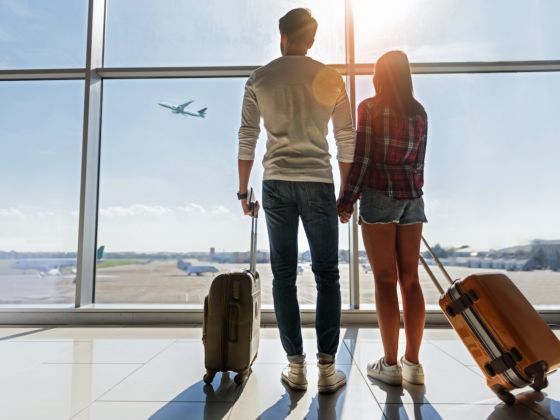TRAVEL TODAY seems almost impossibly removed from that of our ancestors. Imagine boarding a ship 150 years ago and knowing it might be years, decades before you’d ever see the people again who were kissing you goodbye — if you returned at all.
Following this same logic, our travels of today — studying places via Google Earth, creating digital boarding passes on our smartphones, blogging about our travels via words and images — all will surely seem as primitive and perhaps nostalgic to our descendants 150 years from now as our ancestors’ travels do to us.
And yet on some level, progress is an illusion. For every technological innovation gained, there’s a way of connecting or interacting that’s lost, forgotten. Take map reading skills, for example. Or being able to navigate by the stars.
What’s constant is the way travel feels. The inner landscape of emotions that reflects each part of a journey. Like the traveler of 150 years ago, the traveler of the future — even with the 6,000mph vactrains that take her from NY to LA in 20 minutes, the medicines that rapidly heal damage or disease, the cameras that capture and communicate data holographically — she will still have the same giddiness that comes before a trip, the same sense of resolution, of circularity, that arrives when you get home.
Even if that home is in outer space.
With all this in mind, here is a profile of the future traveler.
1. She’ll make intercontinental travel in a matter of minutes.
Right now our velocity as travelers is governed by friction and weather conditions. Future technologies will all but eliminate these. One technology already in design stages in China is the vactrain.
An idea that’s been around since the early 20th century, the vactrain is simply a train that operates within a vacuum tube. Instead of wheels, which are limited by friction (wear, heat, etc), the train would levitate on (and be propelled by) magnets. And because there’s no air resistance inside a vacuum, the train could reach speeds estimated at 5,000 to 6,000mph, allowing travelers to go from NY to Beijing in less than two hours.
2. She’ll have “smart” clothes.
Future travelers will look back at our “tech-integrated” clothing — jackets with special pockets and ports for iPods and earbuds — as more akin to animal pelts than the clothing they’ll wear.
Garments will both regulate conditions from the external environment — temperature, humidity, radiation, etc — as well as the internal environment. “Skin”-like primary layers will monitor vital signs and be able to apply pressure to areas to increase circulation or soothe inflammation. The fabrics will themselves be energy sources, generating solar power.
3. She’ll have various options for personal flight.
The current models of flying cars will look like Fred Flintstone-style vehicles to future travelers, who will not only have different types of personal transport vehicles, but actual suits that take the glide ratio of current wingsuit technology and expand it so people can literally “jump and fly.”
4. There will be no effort to creating “media;” it will come directly from her memory.
The whole notion of capturing media, whether by taking a photo or writing something down, will be replaced by the ability to simply download our minds’ observations, ideas, conversations, memories. And the approach by which we’re currently pursuing this today — through invasive implantation — will be long supplanted by noninvasive sensors that allow “connection” simply through brainwaves. The whole idea of “wires” will be looked at like the horse and buggy.
5. Language acquisition will give her nuanced appreciation of different cultures.
The finest points of travel may be the moments when you finally have enough vocabulary and time in another culture to where you begin to “get” cultural nuances. This is when things stop feeling “foreign” and suddenly take on a sense of identity.
Future travelers will be able to “train” themselves before traveling in languages in ways that bring together the physiognomy, the humor, and other elements of language acquisition that currently take years to master (unless you’re a kid), and compress them to incredibly short times.
6. Her concept of “home” and “lifestyle” will include many different places / possibilities.
Future travelers will move around in ways that seem only like lifestyles of the wealthy today. The reason? “Houses” will be hyper efficient, tradeable, and instantly ‘scanable’ for others to rent or homeswap at the drop of a hat.
Whereas now we look at “destinations” and “activities” as the touchpoints of travel, in the future we’ll be able to scan through menus of entire lifestyles, and inhabit them for different periods of time. Thus, our concepts of what’s “home,” of what’s “school,” of where we belong, will totally change.

